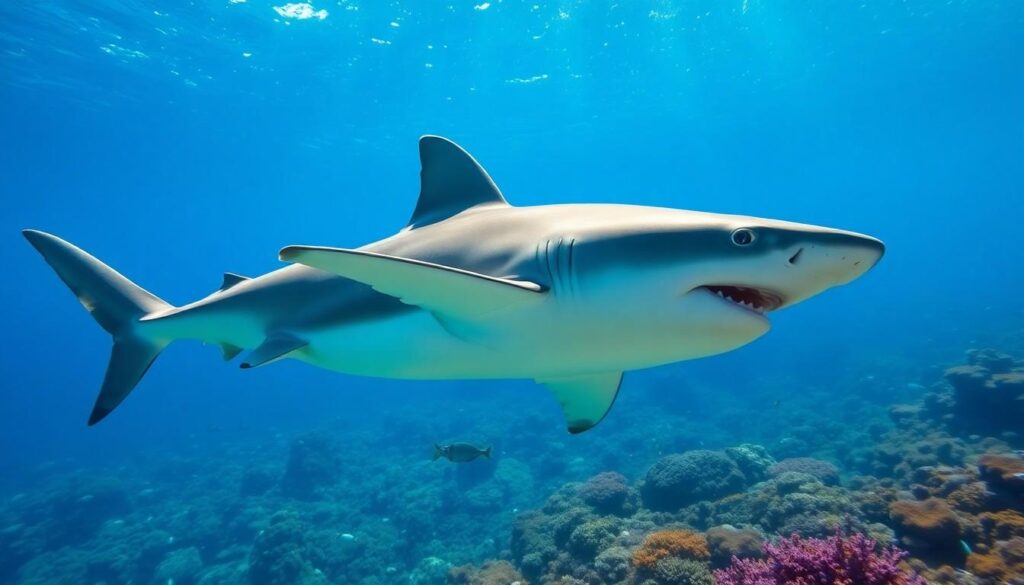Great white sharks are some of the most fascinating creatures in the ocean, and understanding where they live can deepen your appreciation for them. These apex predators thrive in coastal waters, particularly in temperate and subtropical regions. You’ll often find them near the shores of California, South Africa, and Australia, where they hunt for seals and other marine life.
These sharks prefer areas with abundant food sources and specific water temperatures, typically between 54°F and 75°F. They’re known for their migratory patterns, traveling thousands of miles in search of prey and suitable breeding grounds. So, if you’re curious about the habitats of these magnificent sharks, dive in as we explore their preferred locations and behaviors in more detail.
Overview Of Great White Sharks
Great white sharks thrive in various habitats across the globe. They predominantly inhabit coastal waters where prey is abundant. Key regions include the following:
| Region | Specific Locations | Features |
|---|---|---|
| North America | California, Florida | Warm waters with abundant seals |
| South Africa | Cape Town, Durban | Rich marine ecosystems with diverse prey |
| Australia | Queensland, New South Wales | Popular feeding grounds for seals and fish |
| Mediterranean Sea | Coasts of Spain, Italy | Warmer temperatures attract migrating sharks |
Great white sharks prefer water temperatures between 50°F and 75°F (10°C and 24°C). These conditions enable optimal hunting effectiveness. Primary food sources include seals, sea lions, and schools of fish.
Migration plays a crucial role in the life cycle of great whites. They travel thousands of miles annually in search of food and breeding sites. Tracking studies reveal migration patterns correlate with seasonal changes and prey availability.
| Migration Factors | Impact on Great White Sharks |
|---|---|
| Temperature Change | Drives movement towards warmer waters |
| Prey Availability | Influences location and migratory routes |
| Breeding Requirements | Plays a key role in decisions to migrate |
Although great whites exhibit strong site fidelity, they roam widely within their preferred ranges. Research indicates some individuals can cover over 1,200 miles (2,000 km) in a single migration cycle.
Understanding these habitats and behaviors enhances awareness of great white sharks’ roles in marine ecosystems. It also emphasizes the importance of protecting their environments for sustaining healthy shark populations.
Habitat Preferences
Great white sharks display distinctive habitat preferences, thriving in various marine environments. Understanding these preferences provides insights into their behavior and migration patterns.
Coastal Areas
Great white sharks predominantly inhabit coastal areas, where they find plentiful food sources. Key characteristics of these regions include:
| Characteristics | Details |
|---|---|
| Temperature Range | Typically between 50°F and 75°F (10°C and 24°C) |
| Depth | Usually found at depths of 0 to 300 feet (0 to 90 meters) |
| Prey Availability | High concentration of seals, fish, and other marine life |
Regions like California, South Africa, and Australia serve as prime hunting grounds due to their nutrient-rich waters. The proximity to land allows sharks to exploit seals and other prey, especially in areas with rocky reefs and kelp forests.
Open Ocean
Open ocean habitats also attract great white sharks, particularly during migration. Important factors influencing their presence in these expansive waters are:
| Factors | Details |
|---|---|
| Migration Patterns | Covering distances over 1,200 miles (2,000 km) |
| Temperature Preference | Optimal range remains between 50°F and 75°F (10°C and 24°C) |
| Prey Availability | Schools of fish and marine mammals |
In the open ocean, sharks hunt for larger prey like dolphins and smaller whales. This habitat allows them to travel extensively in search of food and breeding grounds, showcasing their adaptability to diverse marine environments.
Geographic Distribution
Great white sharks inhabit diverse marine environments worldwide, predominantly in coastal regions. Their presence correlates with specific temperature ranges and food availability, making certain regions prime habitats.
Locations Around The World
Great white sharks appear in various locations, including:
| Region | Countries | Notable Areas |
|---|---|---|
| North America | USA | California, Florida |
| Southern Africa | South Africa | Cape Town, Durban |
| Australia | Australia | Queensland, New South Wales |
| Mediterranean Sea | Spain, Italy | Coasts of Spain, Italy |
These locations provide adequate food sources, such as seals and fish, supporting the shark population.
Seasonal Migration Patterns
Great white sharks exhibit migratory behavior influenced by environmental factors:
| Factor | Impact on Migration |
|---|---|
| Water Temperature | Prefer temperatures between 50°F and 75°F (10°C to 24°C) |
| Prey Availability | Migration aligned with prey abundance |
| Breeding Needs | Travel long distances for breeding grounds |
Great whites cover significant distances, sometimes over 1,200 miles (2,000 km), seeking optimal hunting spots and reproduction areas during seasonal shifts. This behavior underscores their adaptability to changing oceanic conditions.
Environmental Factors
Great white sharks thrive in specific environmental conditions, which significantly influence their distribution and behavior. Understanding these factors helps in conserving their populations and habitats.
Water Temperature
Great white sharks prefer water temperatures between 50°F and 75°F (10°C and 24°C). This range supports their metabolic needs and prey availability. They avoid waters that are too cold or too warm, as these conditions can be detrimental to their well-being.
| Temperature Range | Shark Activity |
|---|---|
| Below 50°F (10°C) | Inactive |
| 50°F – 75°F (10°C – 24°C) | Optimal Hunting |
| Above 75°F (24°C) | Less Active |
Sharks often migrate seasonally to maintain this temperature preference, moving between coastal areas and open ocean zones based on changing conditions.
Depth Preferences
Great white sharks typically inhabit depths from the surface down to 300 feet (approximately 0 to 91 meters). This depth range provides access to an abundance of prey, including seals and fish.
| Depth Range | Prey Availability |
|---|---|
| 0 – 100 feet | High |
| 100 – 300 feet | Moderate |
During migrations, they also explore deeper waters to hunt larger prey, such as dolphins and smaller whales, showcasing their adaptability to diverse marine environments.
Conclusion
Great white sharks are remarkable creatures that play a vital role in marine ecosystems. Their presence in coastal and open ocean habitats highlights their adaptability and the importance of protecting these environments. By understanding where they live and the factors influencing their migration patterns, you can appreciate the delicate balance that sustains their populations.
As you continue to explore the wonders of the ocean, remember that preserving the habitats of great white sharks is crucial for maintaining healthy marine life. Whether you’re a marine enthusiast or just curious, knowing about these magnificent predators helps foster a greater respect for our oceans and the diverse species that inhabit them.
Frequently Asked Questions
What are great white sharks and where are they found?
Great white sharks are apex predators known for their size and hunting skills. They inhabit coastal waters, particularly in regions like California, South Africa, Australia, and the Mediterranean Sea. These areas provide the warm temperatures and abundant food sources essential for their survival.
What is the preferred temperature range for great white sharks?
Great white sharks prefer water temperatures between 50°F and 75°F (10°C and 24°C). This temperature range is vital for their metabolic processes and the availability of prey.
How far do great white sharks migrate?
Great white sharks are known to travel thousands of miles during migration, with some individuals covering over 1,200 miles (2,000 km) in a single cycle. Their migration is influenced by water temperature, food sources, and breeding needs.
What is the habitat depth for great white sharks?
Great white sharks typically inhabit depths of 0 to 300 feet. They thrive in these zones where they have access to plentiful food sources like seals and fish.
Why are great white sharks important to marine ecosystems?
As apex predators, great white sharks play a critical role in maintaining the balance of marine ecosystems. By controlling the populations of other marine species, they help promote healthy ocean habitats.
How can we protect great white sharks and their habitats?
Protecting great white sharks involves enforcing fishing regulations, conserving their natural habitats, and reducing pollution in the oceans. Public awareness and education about their importance is also crucial for promoting their conservation.

